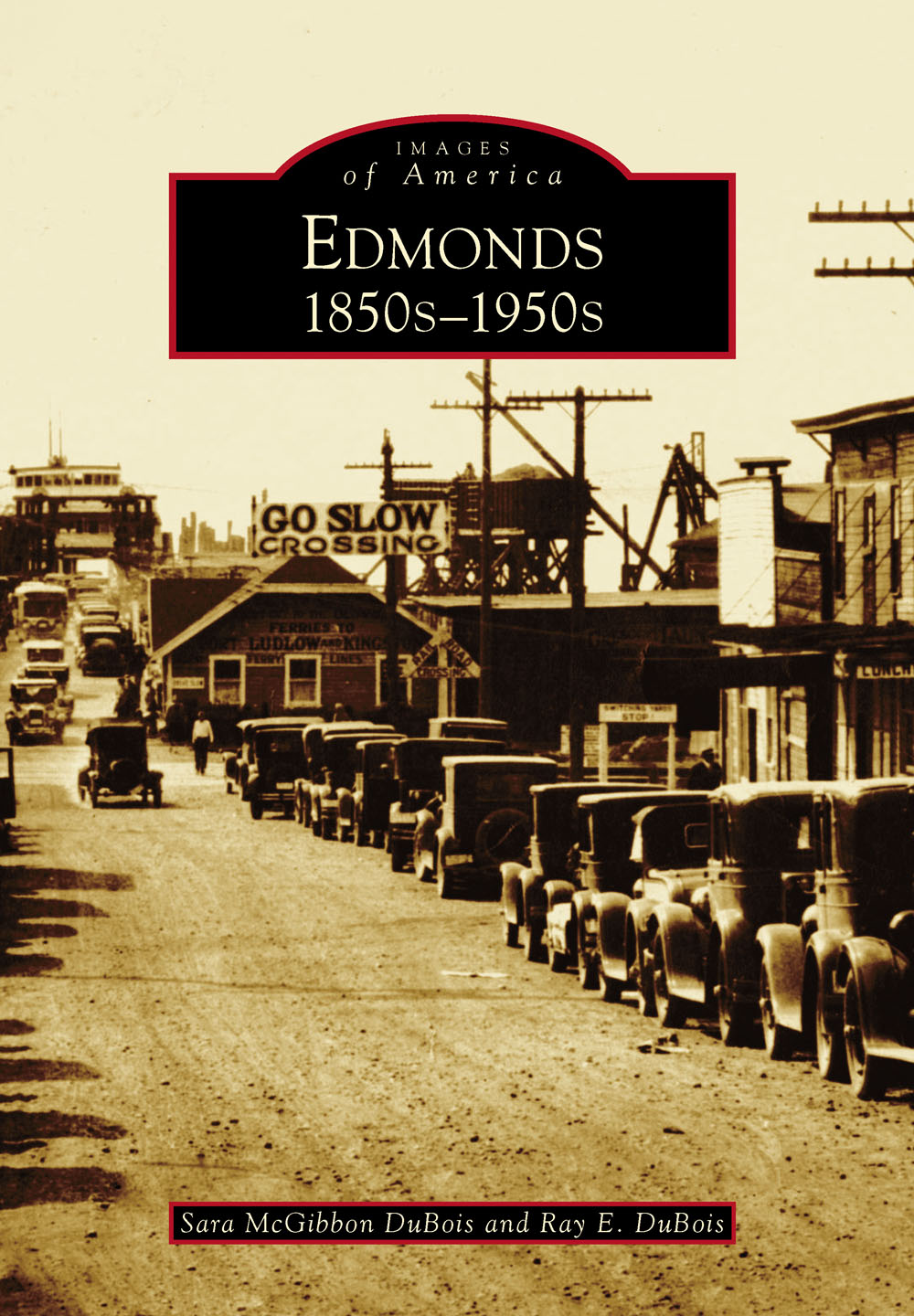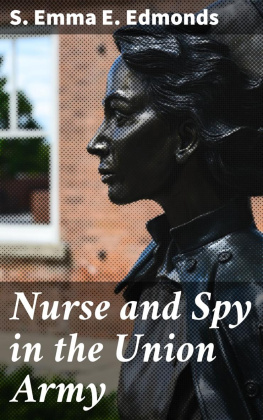
IMAGES
of America
EDMONDS
1850S1950S
ON THE COVER: Edmonds developed as an industrial city from the 1880s until the early 1950s. Due to the abundance of huge firs, cedars, and other trees, logging businesses and mills opened in downtown Edmonds. There were at least 14 mills on the waterfront, about four to the north and 10 to the south of todays ferry dock. Businesses thrived in the small downtown area, built up, changed hands, and multiplied. Most of the businesses lined Main Street, from the waterfront to the Edmonds Grade School on Seventh Avenue. (Courtesy of Edmonds Historical Museum.)
IMAGES
of America
EDMONDS
1850S1950S
Sara McGibbon DuBois and Ray E. DuBois

Copyright 2014 by Sara McGibbon DuBois and Ray E. DuBois
ISBN 978-1-4671-3204-6
Ebook ISBN 9781439649145
Published by Arcadia Publishing
Charleston, South Carolina
Library of Congress Control Number: 2013957395
For all general information, please contact Arcadia Publishing:
Telephone 843-853-2070
Fax 843-853-0044
E-mail
For customer service and orders:
Toll-Free 1-888-313-2665
Visit us on the Internet at www.arcadiapublishing.com
In memory of John W. Wingate and everyone else who ever lived in Edmonds.
CONTENTS
ACKNOWLEDGMENTS
For the vintage photographs in this book, we thank the Edmonds South Snohomish County Historical Society and Museum and Tarin Erickson, director, and Caitlin Kelly, collections manager; Mark Sundquist, for sharing his own vintage postcards and photographs free of charge; the Everett Public Librarys Northwest History Rooms librarian/historians Lisa Labovitch and David Dilgard; the descendants of Josine Erdevig Stone, Christy Merwin and Steve Roe; and the Jolley family members now in two countriesSandee, Lois, and Norman.
We also want to thank other libraries in the region, Edmonds and Lynnwood of the Sno-Isle Libraries and the Seattle Public Library. We received information from the Hibulb Cultural Center on the Tulalip Reservation in northern Snohomish County. We wish to acknowledge everyone who lived in Edmonds, going back 164 years, through 55 years ago, and even now. The authors are indebted to those who did and do live here. The lives of those who lived then and now have added to the very fabric of this history.
Thanks to one and all!
INTRODUCTION
The Indians came to this area to gather the cattails from the marshes for mats, bedding, and clothing. They came to hunt the game animals, which included deer, elk, bear, raccoons, and other mammalian wildlife. They fished the waters, dug for clams and oysters, and hunted for crabs in the beach areas. They camped nearby. In the summer, there would have been delicious blackberries, small huckleberries, wild raspberries, and Oregon grapes. Wild vegetables grew nearby, too, so they had all the healthy food they needed to get by. These Indians also built their permanent and temporary shelters, longhouses, and structures to store food.
George Brackett, the founder of Edmonds, was born in 1841 in New Brunswick, in eastern Canada. He was one of 20 children. Like his father, young George worked as a logger in New Brunswick and coastal Maine. In the late 1860s, he moved west in search of cheap timber and growing markets. He arrived in the Pacific Northwest in 1869 and found work as a logger clearing timber from present-day Ballard and Magnolia.
Brackett dreamed of founding a lumbering town with readily accessible timber, abundant fresh water, and safe moorage. But the coastline north of Seattle was mostly steep hills and bluffs, and thus not conducive to what he had in mind.
In 1870, while exploring Puget Sound by canoe, he was forced ashore by high winds. Coming onto a sandy beach at what would become Bracketts Landing Park, he saw acres of low-bank shoreline covered with timber and riddled with freshwater streams. The water off the beach was deep enough for ships to come into a pier. He returned to Seattle to complete the Ballard logging operations, but never forgot what he had seen.
He returned two years later and paid $650 for 147 acres of beach and prime timberland. It was the first concrete step in realizing his dream. Within a few years, he built a small wharf at the foot of todays Bell Street and soon added a sawmill and loading dock near the site of the present-day ferry terminal.
Despite being small and inaccessible to shipping traffic at low tide, Bracketts wharf served as the only boat landing in Edmonds for many years. When a fire destroyed the mill in the early 1890s, the wharf escaped the flames. It continued as Edmondss primary moorage until 1902, when City Wharf was completed at the foot of Main Street. Today, all traces of Bracketts wharf are gone. The last rotting pilings were removed in 1988 to make way for the breakwater at Bracketts Landing Park.
Before Brackett came to this location, there were a few other settlers, among them Pleasant Ewell, who moved shortly after Brackett bought the tract of land. When Bracketts Landing became more settled, the town was christened Edmonds, presumably for an admired political person of Brackett.
Once Brackett was established, the town grew. Many newcomers arrived and got things going. The Matthew Hyner family, the Mowats, the Yosts, John Lund and the Deiner family, and the Andersons are among the founding settlers.
Logging business and mills soon opened in Edmonds. People got jobs in the mills and were able to learn trades. They came to earn money and eventually built up the town. Mills burned down and were rebuilt, changed ownership, and kept right on going through the late 1940s. The last mill shut down in 1951, and the whole waterfront view was forever changed.
A new one-room schoolhouse was created in 1887, but classes were conducted before that, in the Brackett familys barn. The Edmonds School District No. 15 began with two schools, the grade school and the high school. More grade schools were added, and in the late 1950s, a new high school was built, the old one becoming Edmonds Junior High. Lynnwood Junior High was also established. As more families with children moved to the area, the schools changed their looks and sizes to accommodate the growth. Of the first children to graduate from Edmonds High School, a few became teachers. There was a large number of teachers for the students.
Boats of various kinds were the first mode of transportation for Edmonds. People used canoes and rowboats individually. Then came the so-called Mosquito Fleets of steamers and stern-wheelers, and, after that, small and large ferries. Today, Washington State Ferries ply the entire Puget Sound region.
Edmondss Main Street was home to shoe stores, cafs, and restaurants, the Princess Theater, a confectionery, pharmacies, real estate and insurance agencies, and newspaper offices. There were heating businesses, clothing stores, a Carnegie library, small department stores, and taverns. Establishments were also to be found on the waterfrontboathouses and marine supply stores, the railway station, and boat rentals. Churches and boardinghouses, apartment buildings, and specialty shops lined Main Street in the early days of Edmonds. The town continues to thrive as a bustling arts community and a tourist attraction, especially on the weekends.
There have been many wonderful prominent citizens, and a few that were less prominent but still colorful. The years have seen entertaining mayors and city council members as well. Some residents died young, from sudden illnesses or by the hand of another person. Local history is full of interesting people and events, and those of us who record some of that history are fortunate that there is such a rich supply of information to be had.
Next page













